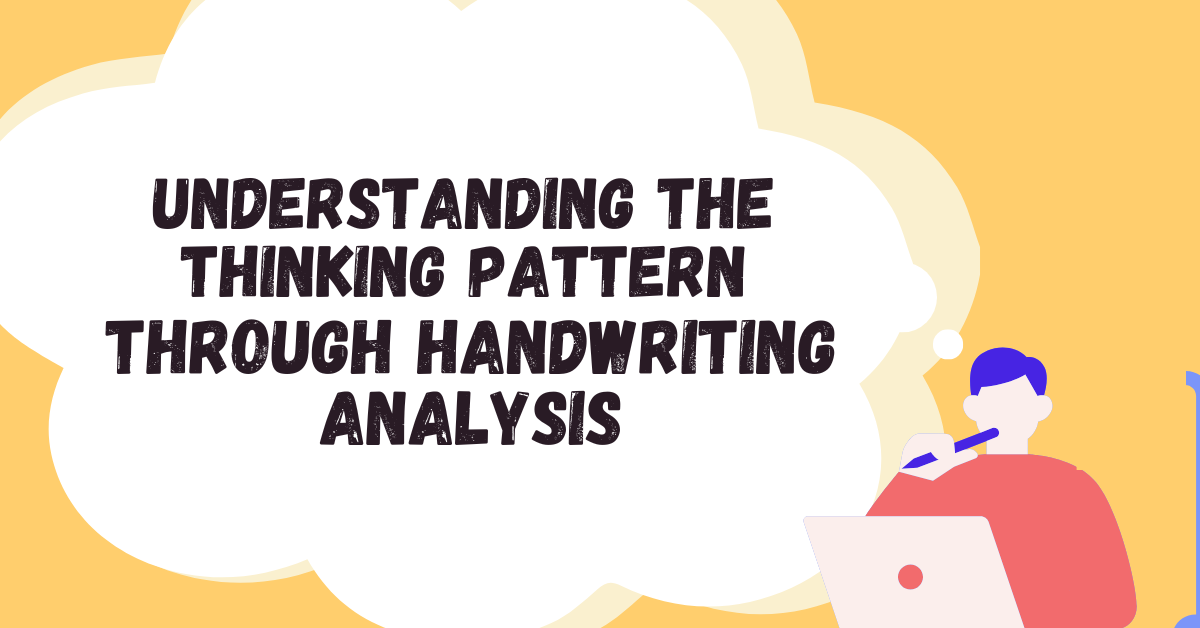Through handwriting analysis, an understanding of the emotions is of primary importance. The second key area to understand is how the individual thinks.
My focus is not on what people think but on how they think: what methods they use, how alert and quick they are and how they go about solving
problems. We want to know about their style of thinking. Realistically, no two people think in exactly the same way but there are some overall styles of thinking that handwriting analysis can identify. For our purposes there are four broad categories or styles of thinking: cumulative, investigative, exploratory and comprehensive. Few of us rely exclusively on any one style, yet for most of us, one style is dominant. Let’s look at each of them.
Cumulative Thinking: These thinkers are builders. Round or even flat-topped m’s and n’s forming smooth letters. These people need all the facts before making a decision. They may take longer to learn, but they will remember. They can be very creative and good with their hands.They like to build one fact or idea upon another until enough are gathered to reach a conclusion. Although these folks appear to be slower than other thinkers, this is no reflection on intelligence (Thomas Edition’s writing indicated this style of thinking). They are careful, they don’t jump to conclusions and, in the thinking world, they might be characterized as the tortoises because they often win the race by being right. Cumulative thinking is identified in the writing by m’s and n’s that are wide and have rounded tops, much like the ones that were taught in elementary school. Usually these structures are accompanied by broad R’s and wide circle letters.
Investigative Thinking: These people want to know all about everything that has been discovered. Sharp points on the top of the letters m, n, r, and/or h that penetrate the upper zone. A quick, investigative, and exploratory thinker sizes up people and situations instantly. Gets irritated by slow talkers.They want to know how things work, what makes them tick and why. Investigative thinking is found in the writing where the tops of m’s and n’s are more pointed than rounded and where the m’s and n’s are not as wide as in cumulative thinking. Slender, sharp tops indicate the writer’s willingness to probe deeply into a subject, whereas, m’s and n’s that are wider at the base line and more rounded at the top indicate less interest in deep inquiry.
Exploratory Thinking: As the investigative thinkers want to know about things that are known or discovered, exploratory thinkers want to know about the unknown. For example, an investigator might want to know all about dentistry and an explorer might want to discover the origin of the universe. As well, explorers usually want to find out things for themselves. Tell them the paint is wet and they will want to touch it. Exploratory thinking is indicated in the handwriting much like investigative thinking. The difference is that the tops of the m’s and n’s rise above the tops of the other lower-case letters.
Comprehensive Thinking: This is sometimes referred to as keen or quick comprehension. Revealed by needlepoint strokes on the top of the n and m, also in the h or i. These people have lightning fast minds that are able to size up situations instantly. They are curious, impatient, intelligent and usually in
a hurry.These are fast thinkers, they catch on quickly and they are bright. If the cumulative thinkers are the tortoises of the thinking world, then these are the hares. When you are in mid-explanation of something, they are saying or thinking: “Yeah, yeah, I’ve got it.” The ironic thing is that sometimes they haven’t “got it.” They can be hasty in reaching conclusions and, although they may be very bright, they can sometimes be careless and jump to a wrong one. Comprehensive thinking is seen in retraced upstrokes on m’s and n’s. These structures often look like u’s or w’s and are needle-like in appearance. The good news is that the more thinking styles one has, the more different ways one can approach mental challenges. People with more than one style are often better problem-solvers. There is more that handwriting analysis can tell us about thinking than just
thinking styles. How we process information, make evaluations and sort out the important from the unimportant is called analytical ability. Analytical
ability causes us to pause and evaluate as we think and thus arrive at conclusions that are more sound and accurate. Wedges that point downward to the base line in m’s and n’s are indicative of analytical ability. As the wedge becomes sharper, the analysis becomes more penetrating. To fully qualify, the wedges must have no retracing and they must meet the base line.
Fluidity of Thought: Another aspect of thinking is fluidity. Most commonly found in the lower loop of the g or in the capital letters of a signature. Signifies the ability to follow and change thoughts smoothly. Often a good conversationalist, speaker, or writer.This is a quality that you can recognize when you are in its presence. You see it in dance, athletics, speech and many other areas of activity. It happens when things are going smoothly and gracefully and when changes can be made quickly and easily, without missing a beat. Wayne Gretzky is a fluid skater, Karen Kain is a fluid dancer, Pierre Trudeau was a fluid orator. When they are “on,” they make it look easy. They glide, it’s beautiful. You know what I mean. Well, it’s the same with thinking. The ideas come steadily and they flow easily, one into the other, there’s no hesitation. Some people have this gift and the rest of us may experience it on occasion. In handwriting, fluidity of thought is seen in figure-eight strokes, typically, in g’s, f’s s’s, and you can find it where one letter flows smoothly into the next. An example would be a t-bar that becomes the lead-in to an h in the word the.
Analytical Thinker: Shown by natural “V” formations at the base line, usually in m’s and n’s. The analytical person analyzes everything. This person has a strong reasoning ability to sift and weigh the facts.
The elements making up this evaluated trait are: comprehensive thinking, intuitiveness, creativity, attention to detail, decisiveness, fluidity of thought, as well as challenging goals and a strong sense of purpose (willpower). All of these basic traits are easily discernible in handwriting and most are explained in chapter five.
You can imagine that if an individual possesses all of these basic traits, it would follow that he/she is an efficient thinker. I wanted to use this example not only to point out that there is more to thinking than what’s been covered so far, but to show how an evaluated trait works and how it is possible to combine a number of basic traits and come to a larger conclusion. A final note on thinking. People think differently in different circumstances. We saw before that, generally speaking, higher, sharper wedges mean deeper and more penetrating thinking.



